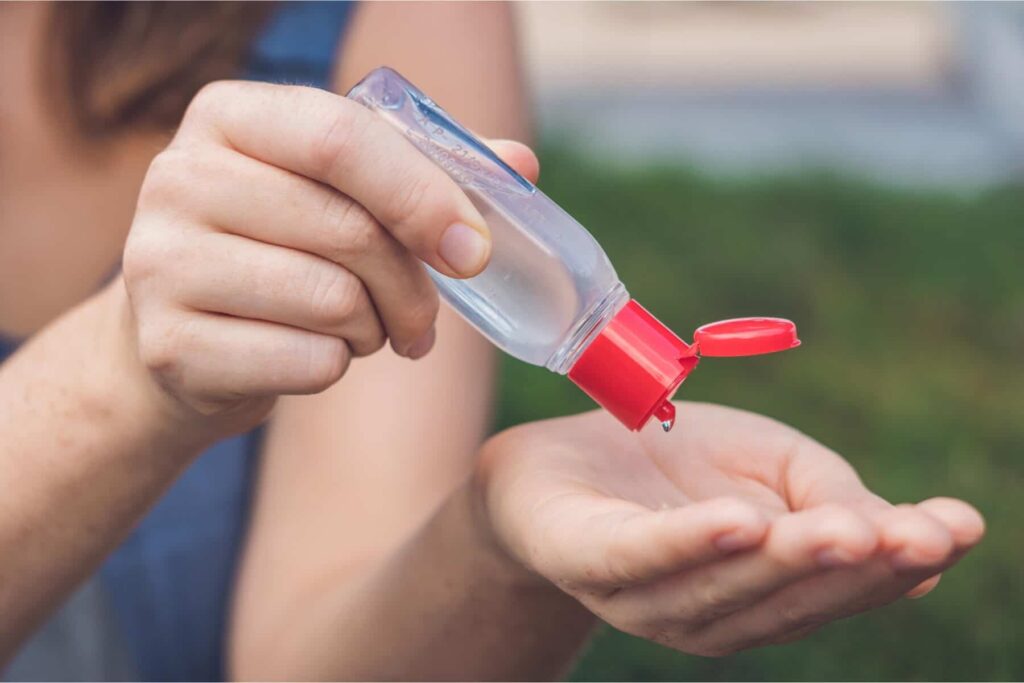
As you are undoubtedly aware, the current Covid-19 outbreak is causing hand sanitizer to continually sell out. But watch out for mass-produced hand sanitizers that include methanol or wood alcohol, both of which can be harmful if consumed or absorbed through the skin.
The best strategy to stop the transmission of germs is to wash your hands with soap and water. However, the Centers for Disease Control and Prevention (CDC) advise using a hand sanitizer with at least 60% alcohol if soap and water are not readily accessible.
The Food and Drug Administration (FDA) controls the manufacture of hand sanitizer, requiring that when purchased, commercial hand sanitizers always contain at least 60% alcohol.
Commercial sanitizers are advised since homemade sanitizers are harder to measure for alcohol concentration. In a pinch, though, you might be able to create a potent hand sanitizer at home. How? Read on.
How to make your own hand sanitizer
Warnings:
The following recipe for hand sanitizer is meant to be used by experts with the knowledge and tools required for safe production and appropriate application.
Use homemade hand sanitizers only in emergency situations where handwashing won’t be possible for a while.
Avoid applying homemade hand sanitizers to children’s skin since they may be more likely to misuse them and injure themselves.
How it works
Hand sanitizer has to have at least 60% alcohol in order to be efficient in killing germs. Alcohol content in manufactured goods is assessed using an alcohol meter.
This recipe yields a hand sanitizer with the required amount of alcohol when carefully followed. But it’s crucial to measure exactly.
The proportions of essential substances must be carefully considered or else you run the danger of producing a recipe that is ineffective or excessively harsh on your skin.
What you’ll need:
- 1 part aloe vera gel or glycerin
- 91% isopropyl alcohol (rubbing alcohol) in a 2 part solution
- A flavorful oil, like lemon or lavender (this is an optional ingredient for scent)
- Clean mixing bowls and a storage container that is airtight
- Spoon or whisk for mixing
Steps
Step 1. In a clean bottle, mix the isopropyl alcohol and aloe vera gel or glycerin. Combine 13 cup of gel or glycerin with 2/3 cup of rubbing alcohol to make 1 cup of sanitizer.
Step 2. To ensure that the alcohol is dispersed evenly throughout the gel, vigorously blend with a spoon or whisk.
Step 3. If you’re using an essential oil, stir in five drops. This is completely optional and merely serves to enhance the sanitizer’s fragrance.
Step 4. Sanitizer should be kept in an airtight container. An airtight container helps keep your sanitizer working for longer because alcohol evaporates over time. Make sure the container for your sanitizer is clean and airtight. A pump or squeeze bottle can reduce evaporation while keeping your sanitizer readily available.
Stick to a 2:1 alcohol to aloe vera ratio when creating a potent, germ-zapping hand sanitizer. This maintains the alcohol concentration at about 60%. According to the CDC, this is the bare minimum required to eradicate the majority of germs.








